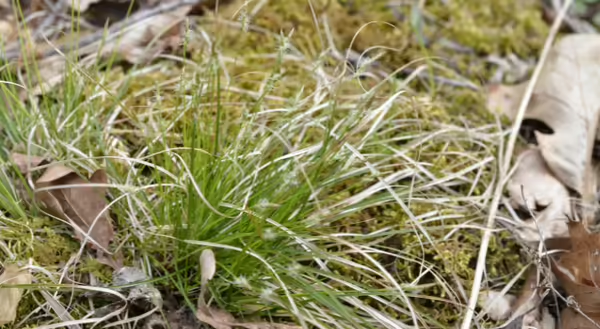
This time of year, I start getting emails with questions about how to identify grasses that people find growing in their yard. After reviewing pictures, oftentimes the grass they want to know more about actually turns out to be a sedge. Sedges are grass-like plants, but they have some distinct differences.
Sedges, grasses, and another group of plants called rushes are all monocots, a group of plants that produce one cotyledon, or seed leaf, when they germinate. If you think about seeds that you’ve planted before, like a sunflower, radish, or zinnia, when the seed germinates and starts to grow, there is a pair of cotyledons, or seed leaves. These plants and many others form another group called dicots, and they have two cotyledons. They also typically have showy flowers, which are lacking for many of the monocots.
What’s an easy way to tell apart the sedges, grasses, and rushes? There are many variations of this phrase, but I like this one: “Sedges have edges, rushes are round, grasses have nodes from the top to the ground.” And I’ll add on a few more words: most of the time. Plants don’t always follow the rules, and there are exceptions to these phrases. But let’s take a closer look at what it means.

Sedges have edges
Many sedges have triangular shaped stems, giving them edges. This is easily felt by rolling the stem between your fingers. They don’t have any nodes along their stems, and the stems are not hollow. Sedges with triangular stems have three ranked leaves, which means the leaves are arranged on all three sides of the stem. Most sedges in Illinois belong to the Carex genus, and there are over 190 species.
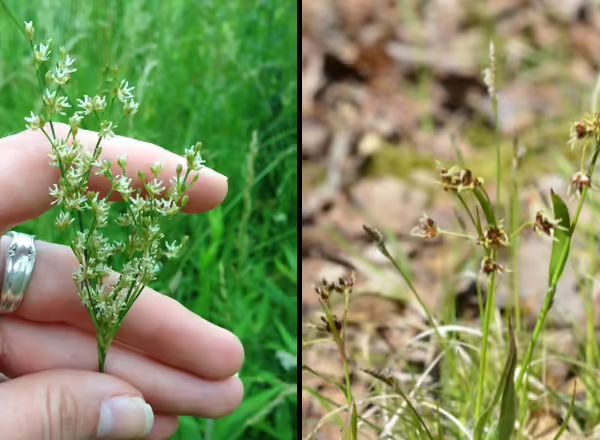
Rushes are round
In general, rushes have stems that are round. Like the sedges, the stems do not have nodes and are not hollow. Rushes also have zero to a few leaves along their stems. Many rushes belong to the Juncus genus, and there are 28 species in Illinois. Their flowers have 6 tepals (extra leafy material) that make them look star-shaped.
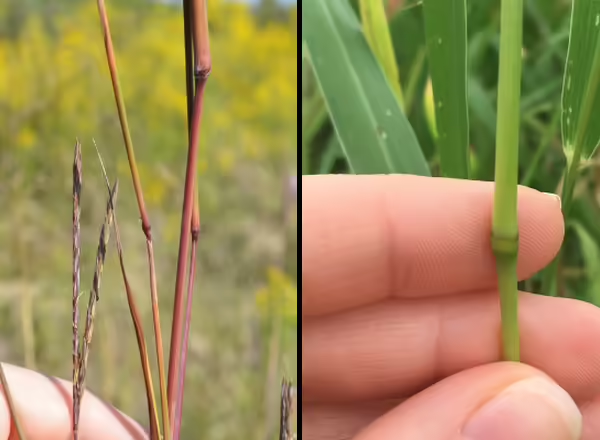
Grasses have nodes from the top to the ground
Grasses have round stems, like rushes, but they are hollow. They also have nodes along the stems. Nodes are areas where the leaf sheath ends, and there is a small swelling. You can usually see and feel nodes along the stem.
There are other characteristics that distinguish them that have to do with the flowering structures of the plants, but they are a bit harder to use. In general, I’ve had luck with just using the vegetative characteristics. But take a look at some of the pictures below to get an idea of what sedge flowers can look like!
One last note – beware of some common names, because they can be confusing. For example, Broomsedge is a grass, not a sedge; Bulrush is a sedge, not a rush; and Woolgrass is a sedge, not a grass!
Next time you are trying to identify a grass, take a closer look and first check if the plant you are identifying is indeed a grass!

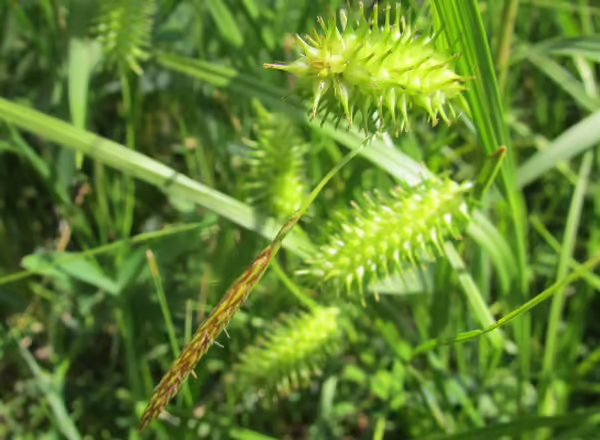
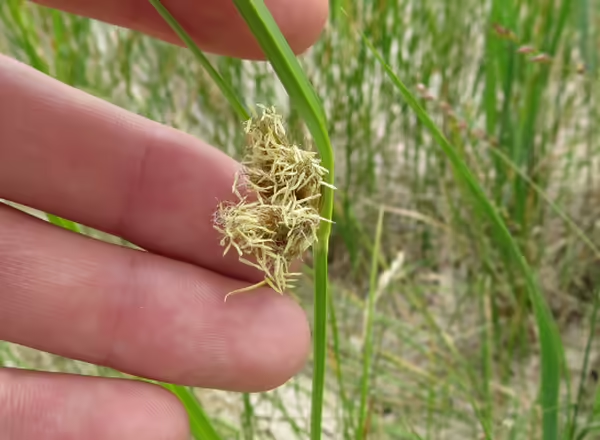
Never miss a new post! Sign up for our email list.
ABOUT THE AUTHOR: Erin Garrett is a Natural Resources, Environment, and Energy Educator for University of Illinois Extension serving Alexander, Johnson, Massac, Pulaski, and Union counties. Erin develops and delivers high impact programming to adults and youth to help them develop an appreciation for natural resources and to empower them to make small changes to positively impact the environment. Erin’s programming focuses on why homeowners should consider choosing native plants, how to support native pollinators, how to identify grasses, how to identify and manage invasive species, and developing an appreciation for prairie ecosystems.
ABOUT THE BLOG: Grasses at a Glance dives into grass identification, focusing on tips and tricks that make grass identification possible. Get information about native and non-native species, how to tell look-alikes apart, and which grasses you can find in Illinois.